How To Run Activeperl On Windows
Of import: This article relates to AcitvePerl up to version 5.26. From ActivePerl v.28 onwards, ActiveState sadly discontinued their PPM tool which allowed easy installation of additional modules. For assistance installing the latest ActivePerl and additional modules, delight refer to the vendor's own documentation.. or consider using Strawberry Perl instead! This commodity is part of our "How to install prerequisites needed for running a self-hosted edition of MIDAS from a Windows server" series. Information technology applies to self-hosted installations of MIDAS software on Windows-based servers only, and outlines how to install ActivePerl on Windows. Other Windows distributions of Perl (such as Strawberry Perl) are also available. Please note that this commodity is provided "as is" and is correct at time of writing. For farther aid installing/configuring Apache, please refer to the vendor'southward own documentation/support. This article assumes that you lot've already successfully completed our previous "How to install & configure Apache on a Windows server" guide. Please Note: At time of writing, a Perl module which MIDAS requires (DBD::MySQL) in guild to part isn't yet available for Active Perl five.26, therefore we would strongly propose installing confronting installing ActivePerl 5.26 at this time, and instead installing 5.24. If selecting "Custom", nosotros suggest that the "PPM" choice is besides selected, as this volition brand information technology easier to install additional Perl modules afterwards. On the post-obit dialog, be sure that "Add Perl to the PATH surroundings variable" is selected: #!C:\Perl\bin\perl.exe Salve this file equally "exam.pl" to C:\Apache24\htdocs (or D:\Apache\htdocs, etc depending upon where y'all installed Apache) If yous've not added the "ScriptInterpreterSource Registry" directive to your Apache server's http.conf file (as described in the beginning part of this series, "How to install & configure Apache on a Windows server", and then ensure that the first line of your "test.pl" file reflects the location where you chose to install ActivePerl, followed by \bin\perl.exe. If all the same you did set the "ScriptInterpreterSource Registry" Apache directive, and then you don't need to worry about the first line of your exam.pl script being correct - in fact, it can be safely omitted it all together! Next, in your web browser, navigate to http://127.0.0.one/exam.pl, and y'all should then see the words "Hi Earth!" in your browser: If even so, yous see the entire contents of your exam.pl file, then Apache didn't know how to handle your .pl file, and then instead of "executing" it, displayed its contents as plain text instead. In which case, please cheque Step 3B of our "How to install & configure Apache on a Windows server" guide. If all you meet if a server error when access test.pl in your browser, it'due south likely that either you've not correctly configured Apache to handle .pl files and/or to execute cgi scripts (delight refer back to our "How to install & configure Apache on a Windows server" guide), or in that location's a typo in your test.pl file. IMPORTANT: This section relates to installing additional Perl modules via ActiveState's PPM tool. This was discontinued as of ActivePerl 5.28, and replaced with a "land" tool. Please refer to the vendor'southward own documentation for assistance installing Perl modules with this new tool. One time you accept your test.pl script displaying "Hello World!" in your browser, it'south at present time to download and run our "Server Readiness" MIDAS tool. This utility will exam your server setup and ensure that you take all the required Perl modules required for running MIDAS, and may exist freely obtained via the MIDAS Server Requirements folio. Save the utility to the same location as your previous "test.pl" script, then access it via your browser in the aforementioned manner. Let the Server Readiness tool run, and make note of any missing required Perl modules: ActivePerl comes with a handy "Perl Package Managing director (PPM)" tool allowing you to easily install additional modules. You should be able to locate this tool via a shortcut in your Start Bill of fare: When PPM loads, press Ctrl + 1 to view all bachelor packages, and use the search box to locate those which the MIDAS Server Readiness tool informed y'all were missing, in this example, DBD::mysql: Do this for any other missing required modules, and so in one case you lot've marked all the required modules for install, press Ctrl + Enter. Accept PPM's confirmation that it'southward about to install modules, and and then let the installation commence. It may take several seconds/minutes depending upon the number of modules you've selected. Once installation of all modules is complete, the "Status" tab at the bottom of the PPM window volition betoken that installation is complete. Re-run the MIDAS Server Readiness tool again in your browser to bank check that the previously missing modules have now been installed.Contents:
Pace i - Download ActivePerl for Windows
A costless "Community Edition" of ActivePerl is available for Windows may exist downloaded from ActiveState.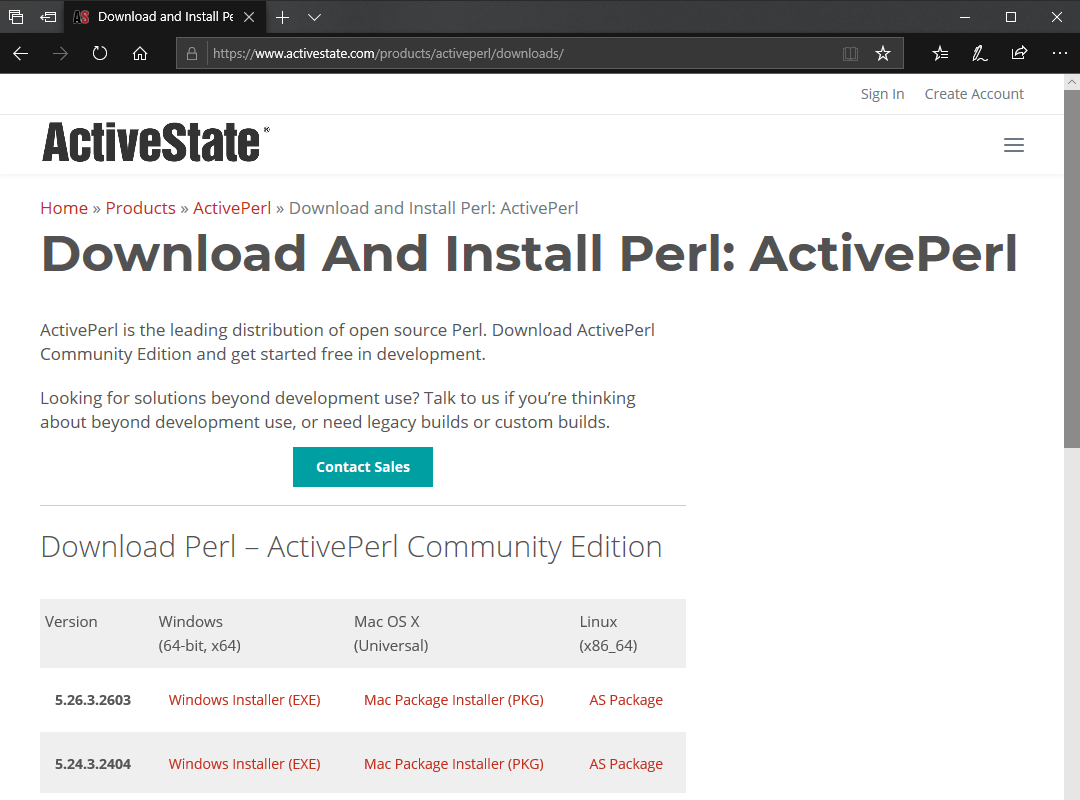
Step ii - Install ActivePerl
Run the ActivePerl Installer, read & accept the License Agreement, and then select a "Typical", "Custom", or "Complete" install. If in dubiety, select "Complete". If you lot wish to install ActivePerl to a different location (the default is C:\Perl64), you'll need to select "Custom" instead: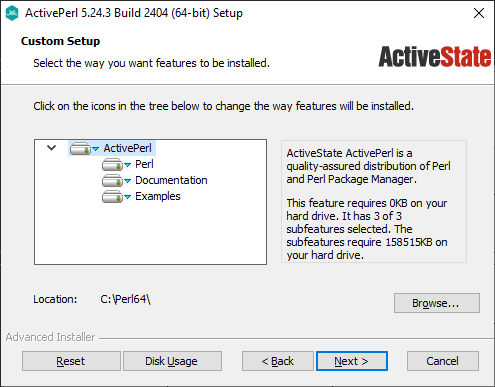
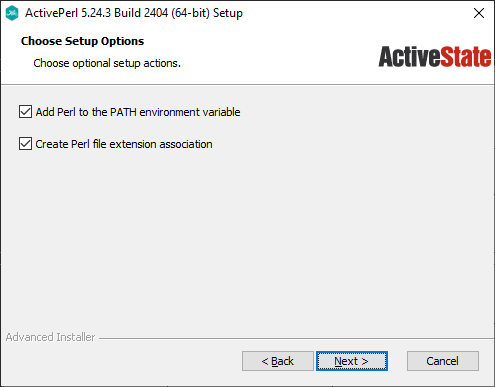
Step 3 - Exam
One time the ActivePerl installer has complete, let's test Perl to ensure that information technology's working correctly.
Open a standard text editor and add the post-obit 2 lines:
impress "content-type:text/html\n\nHello World!";
...which indicates that Perl has been correctly configured!
Step 4 - Install Additional Modules
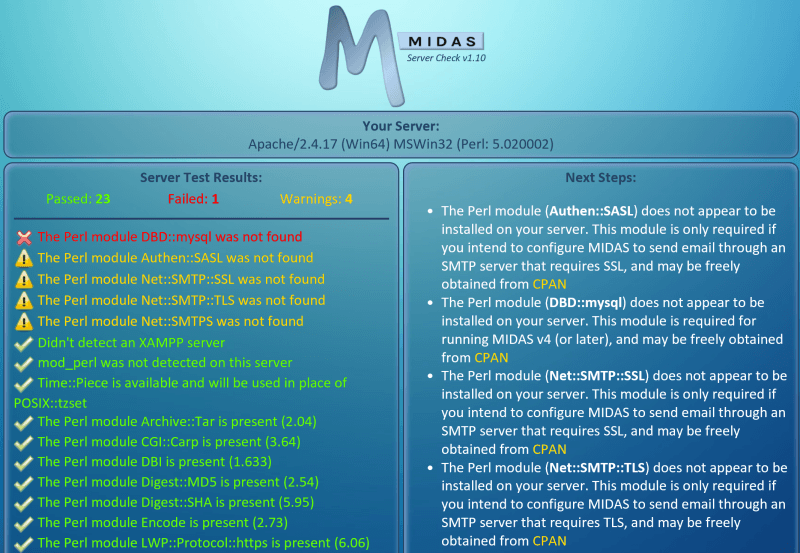

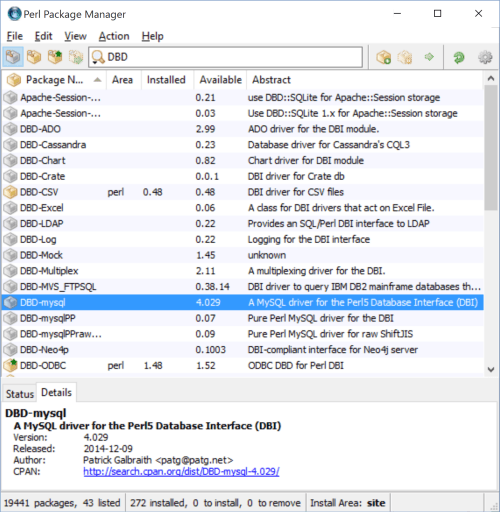
Too In This Series...
Source: https://mid.as/kb/00144/install-configure-activeperl-on-windows
Posted by: hansencollow.blogspot.com

0 Response to "How To Run Activeperl On Windows"
Post a Comment